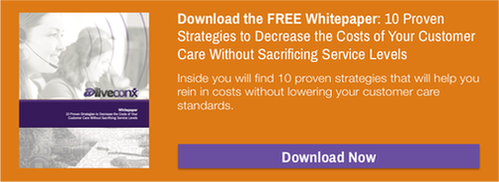Tactical Strikes: Leveraging Data in the Contact Centre
Leverage the right data at the right time to give your contact centre a competitive edge.
Your contact centre has one goal: to keep your customers happy. To do this, your centre only has to accomplish a million smaller goals. These range from maintaining standards of quality, the management of key performance indicators, to creative and engaging problem solving that builds on a foundational relationship with your customers. Easy enough, right?
Fortunately, these tasks are easily managed with the use of data analytics, software management systems, and the right team of agents to use them.
Data Management Tools
The work is never done in the contact centre, as a legion of beleaguered call centre agents can attest. Building an exceptional customer experience is a never-ending uphill struggle, but your agents aren’t alone in the fight.
Data is the driving force behind what your agents do. And with a report by Deloitte showing that 82 percent of customer service leaders believe accurate and quality information is one of the most important factors of good customer service, you can bet that reliable data is worth its weight in gold.
With that in mind, let’s review several types of data:
Quantitative data metrics are hard numbers and statistics taken from measurable benchmarks that indicate how your centre is performing against pre-set standards. These include:
- Average handle time
- Average time waiting in queue
- Hold time
- First Contact Resolution
These metrics are gathered with call centre software tracking, or by manually analyzing call history. Quantitative measures offer the opposite side of the qualitative equation; where quantitative data can provide knowledge about the efficiency of procedures, qualitative data offers feedback and the potential for growth.
Qualitative data are not measured by numbers and are typically used to approximate interactions and describe why situations occurred the way they did. These can include:
- Variance in language and dialogue between customer and agent
- Tone of voice throughout the interaction
- Opinions recorded from live calls
This type of data can be used to analyze specific customer interactions to gain insight beyond what numbers and statistics can provide.
Quantitative and qualitative metrics should be measured together to provide a comprehensive view of the quality of your service; like two wings of a plane, you can’t have one without the other.
Software Management Systems
It’s no industry secret that customer interactions work best when tailored to the unique experience of the customer, but with the broad spectrum of callers that the average contact centre receives, how can any manager accomplish this without tearing their hair out?
Software management to the rescue! Remember the wealth of qualitative and quantitative metrics that we’ve already gathered? These can be implemented into a software system to give you all the information you need.
Software can be used to monitor and record calls, track how often the same customer has called, and provide real time feedback to your agents while they’re on the line. This can increase their call agility and keep them informed no matter what situation arises.
By leveraging your software solution to integrate data from your CRM, social media, previous interactions, and support requests, you can be assured that you’ll have as much information on your customer as you’ll need to give them a personalized experience.
The Human Element
But with as many gadgets as call centres utilize to meet their goals, it’s important not to lose sight of the big picture. The real driving force behind the technology should be the core values of your call centre, aimed at creating a unique and comprehensive customer experience.
This involves going beyond what the metrics are telling you and applying solutions strategically for the benefit of your customers. Take steps to plan for the future of your customers. These initiatives can include anything from instituting security protocol in your data analytics software in the event of a breach to developing customer loyalty programs aimed at proactive outreach toward qualifying members.
A report by Temkin Group indicated that 84 percent of businesses increased their focus on customer service measurements and metrics in 2014, demonstrating that while optimal customer service might yet be a lofty goal, most companies are at least on the right track.
Juggling the expectations of your customers with the standards of quality of your centre can be daunting, but managers just need to know where to look to find the help they need. An optimized software system can provide their staff with the appropriate data at the right time to further the goal of creating an effective customer service experience. The answers are at your fingertips. It’s up to you to use them.
Curious about more ways to utilize data for the benefit of your customers? Download our free white paper!










